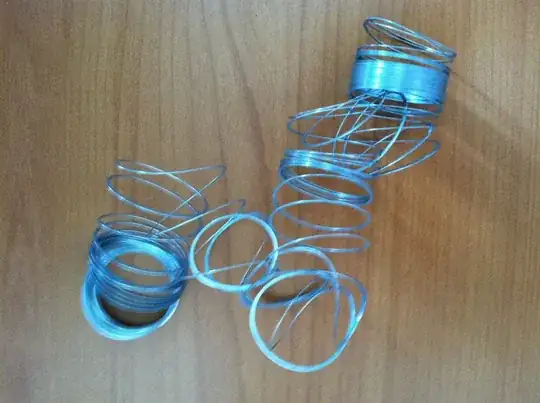The reason that Slinkies become tangled up is because they retain radius, number of turns, and shape. The helix of a Slinky, like the helix of DNA, has a certain twistiness that it prefers (that is, so many turns per cm), and when you manipulate the ends of the Slinky in an attempt to increase or decrease its twist, it resists and transfers the twist to the body of the Slinky, twisting itself through space. The bottom of this Wikipedia page has a simulation of this occurring with an elastic rod under twisting stress. When this happens with DNA it is called "super-coiling". This is also the main problem with phone cords, having one free end (the receiver) which can go through several 360 degree rotations without you noticing and one fixed end (the base) which cannot twist to relieve the tension. The solution is to spin the receiver around enough to de-twist the cord.
The "reversal" of the Slinky coils is because the end of the Slinky has been moved through some of its coils, in effect twisting it through space in a way that cancels one of the coils, while reversing the others between the canceled coil and the end. The U-shapes where the Slinky changes direction are these canceled coils. Two possible solutions: For a stiff coil like the metal Slinky, it is best to reverse the operation, moving the end of the Slinky past/through the U-shape to uncancel the coil. The second method works best with plastic coils, like plastic Slinkies or phone cords (which rarely but sometimes succumb to this). There is a manipulation that I learned while messing with a tangled phone cord, but which is too difficult to describe here, which moves the U-shape along the coil. This way you can move it off the end of the coil (if the end is free), or take two U-shapes and cancel them out with each other.
Ultimately, if you plan on putting a Slinky in storage, either put it back in the box it came in, or put a piece of tape on the inside and outside lengthwise. The tape will prevent the ends from twisting or manipulating through space through the coils.
